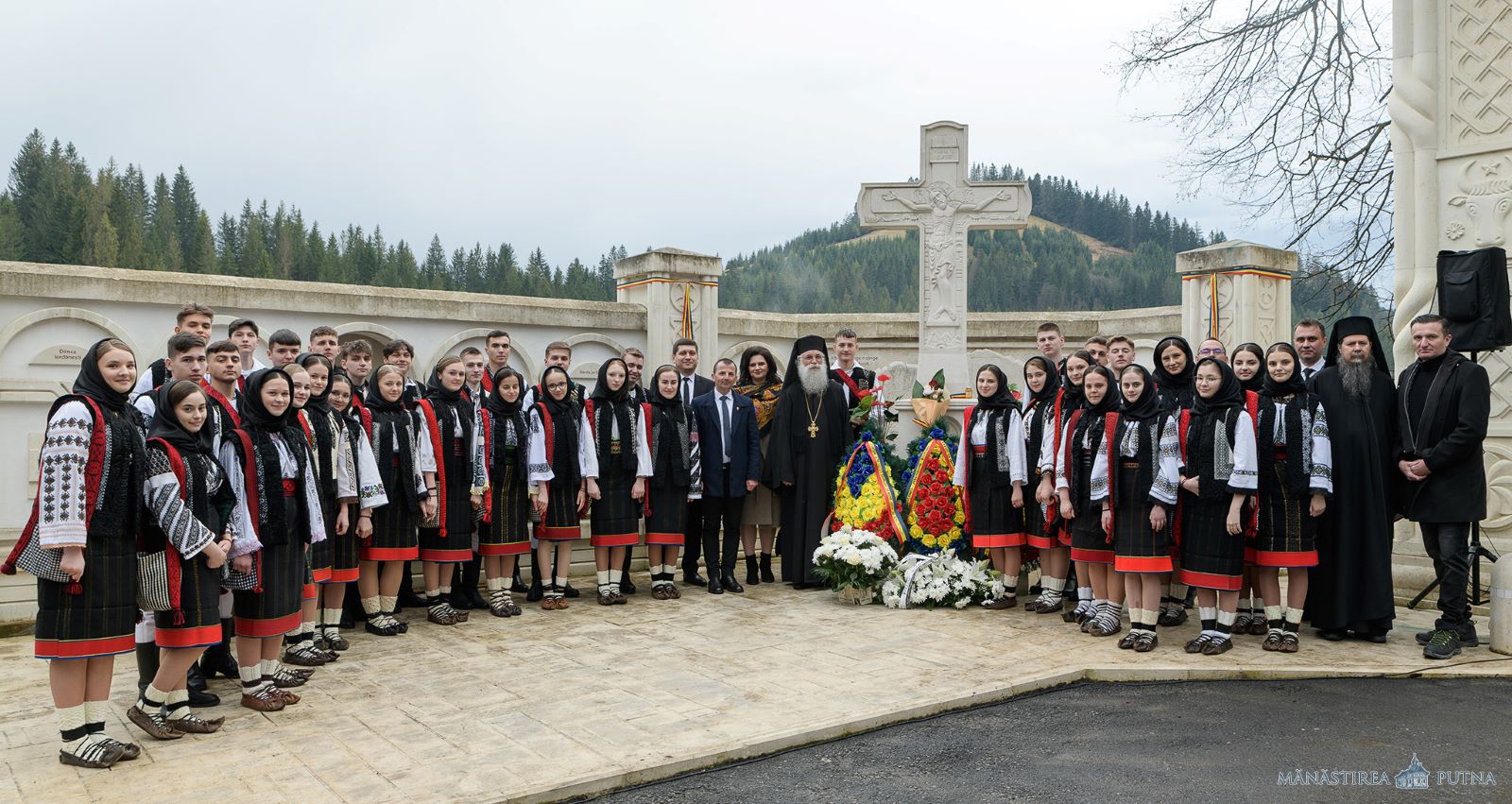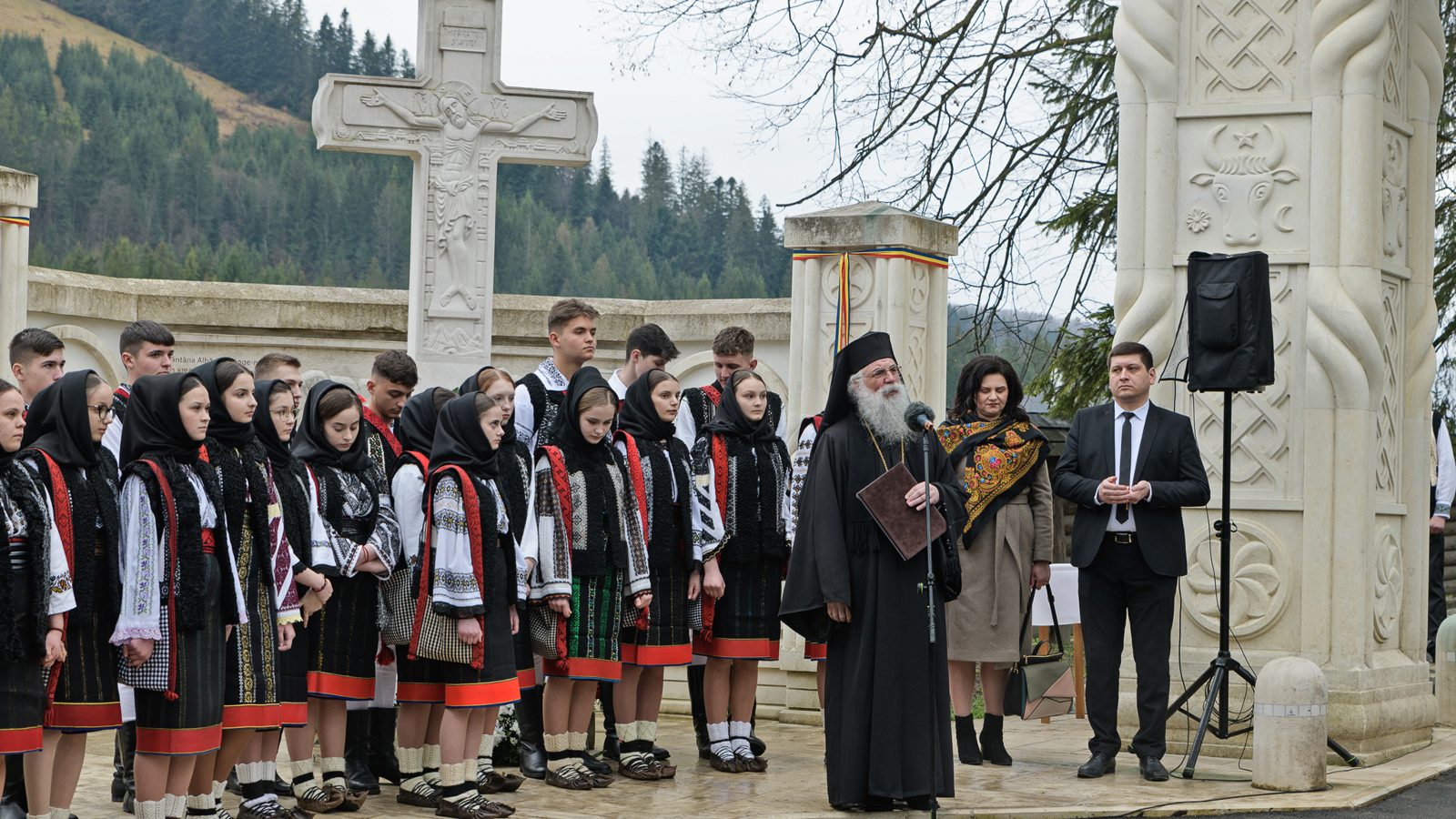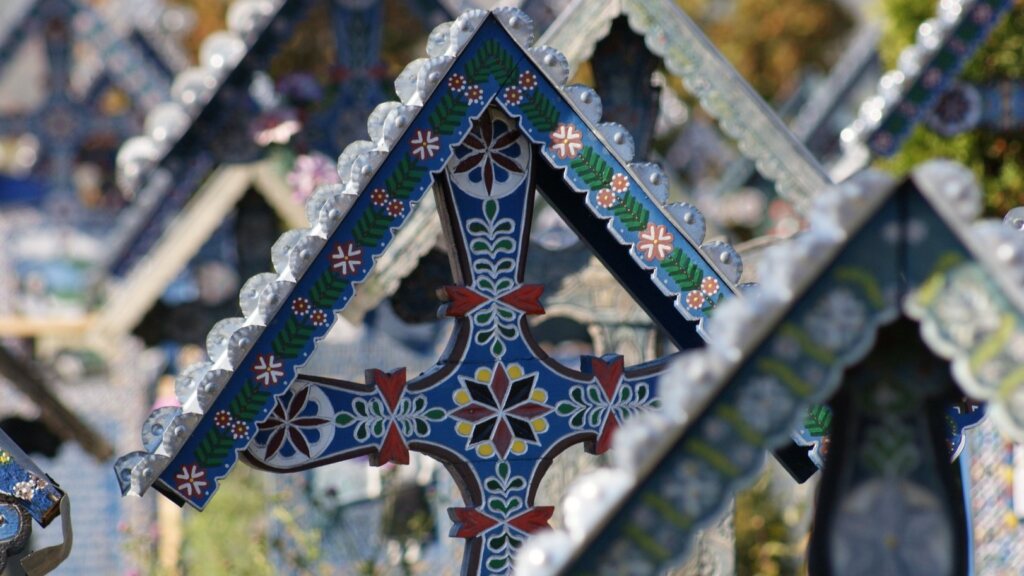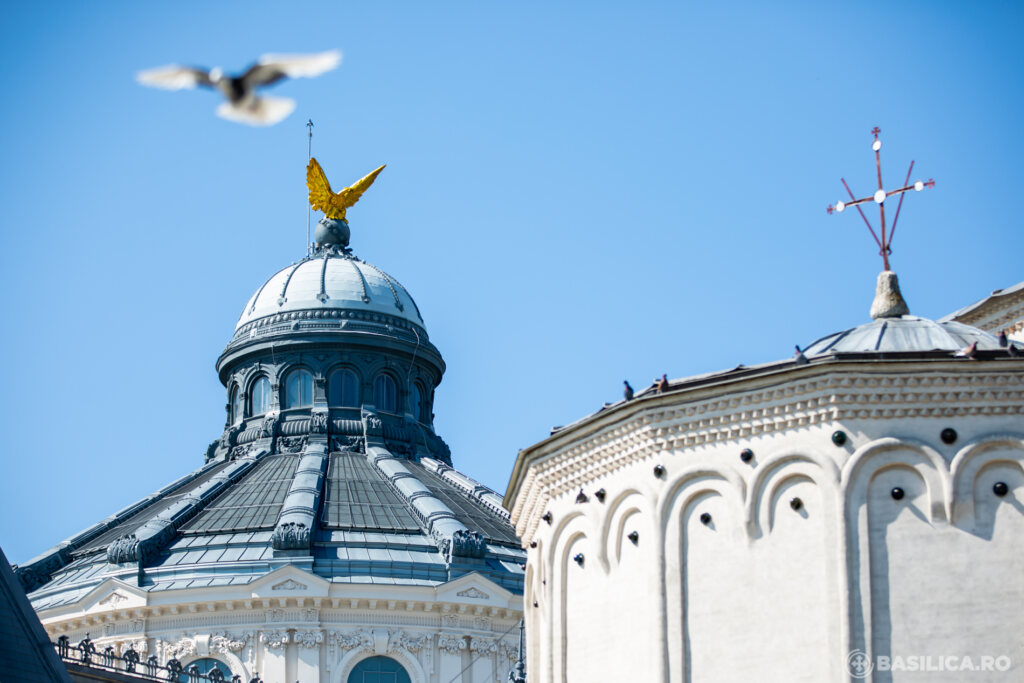The hieromonks of Putna Monastery commemorated last Saturday, as they do every year, the thousands of Romanians massacred at Varnița (Fântâna Albă) on April 1, 1941 in the so-called “Romanian Katyn” onslaught.
The service was held at the “People’s Golgotha – Fântâna Albă” Memorial Portal, built at Putna Monastery in their memory. The monastery fathers were joined by clergymen from Putna village.
After the prayer, representatives of the following institutions laid wreaths: Putna Town Hall, Vicovu de Sus Town Hall, Straja Town Hall, “Ion Nistor” Vicovu de Sus Technological High School, the Association Suceava branch of the Romanian Orthodox Christian Students’ Association.

- A song and poetry recital by the vocal-traditional group “Ai lui Ștefan, noi oșteni” (“Prince Stephen’s New Servicemen”) from the “Ion Nistor” High School in Vicovu de Sus followed.
The mayor of Straja, Mr. Mihai Juravle, spoke about the transformation of the Fântâna Albă into a mass grave for thousands of Romanians killed because they were in search of their country, their freedom and their faith.

The abbot of Putna Monastery, Archim. Melchisedec Velnic, presented the message of Mr Gheorghe-Florin Cârciu, Secretary of State at the Department for Romanians Abroad.
“April 1, 1941 is a day of tragic memory for the Romanian people. 82 years ago, more than 3,000 Romanians were killed at Fântâna Albă when they tried to cross into Romania after the annexation of northern Bukovina by the Soviet Union. We will keep alive their memory and the sacrifice they made in order to be forever close to their kindred,” the official said.
The archimandrite recalled that he has not been able to pray at the massacre site since 2019. Discussions are currently underway to make the Fântâna Albă – Climăuți border crossing.

The Abbot of Putna reiterated the need for the Fântâna Albă massacre to be included in history textbooks and expressed his hope that a church in memory of the victims could one day be built at the site.

Historical background
After the signing of the Ribbentrop-Molotov Pact in 1939, the USSR occupied Bessarabia, northern Bukovina and Herta Land in 1940. Many Bukovina Romanians were arrested, killed, and deported, churches began to be closed, so many families began to cross the new border and come to Romania.
One such group was made of the thousands massacred at Fântâna Albă on April 1, 1941.
At the time, about 3. 000 Romanians from Bukovinan villages along the Siret Valley left for Romania: from Pătrăuții de Sus, Pătrăuții de Jos, Igești, Crasna, Ciudei, Budineț, Cireșul, Crăsnișoara Veche, Crăsnișoara Nouă, Bănila Moldovenească, Dăvideni, Carapciu, Cupca, Trestiana, Suceveni, Iordănești. They had decided that they would rather die than live in the Soviet Union.
Those at the head of the group carried three crosses, icons and white flags, showing that they meant no harm, but wanted freedom. They told the Soviet authorities that they wanted to leave without taking anything with them, leaving all their possessions behind. When they reached the border they were met with machine-gun fire.
After the ceasefire, the wounded who remained alive were thrown into mass graves along with the dead. Those who managed to escape were tracked down in the surrounding area, so very few remained alive. Two months later, on June 13, 1941, around 13,000 families from their villages were deported to Siberia and Kazakhstan, with only about 10% surviving the deportation.
Steps towards remembrance
April 1 was designated in 2011 as the National Day for Honouring the Memory of Romanians – victims of the massacres from Fântâna Albă and other areas, victims of deportations, of famine and other forms of repression organized by the Soviet totalitarian regime in Herta County, northern Bukovina and the whole of Bessarabia.
Putna Monastery’s “People’s Golgotha – Fântâna Albă” Memorial Portal was consecrated on July 2, 2018. The whole ensemble – including a monumental gate, a stone fountain, a memorial cross, spaces for laying flowers and lighting candles, and inscriptions with the names of the martyred villages – has a profound significance and a symbolic message.
The gate is the passage, the cross marks a place of sacrifice; placed before the gate, it shows that those killed laid their lives in passing towards their beloved Romania, which was also a passage to true freedom in God. The fountain is the symbol of the life that springs from sacrifice.
The portal was built by the monastery on the site of a cross erected on April 1, 2011, in memory of the Fântâna Albă massacre victims at the initiative of the Romanian Government’s Department for Romanians Abroad.
Photo credit: Putna Monastery






